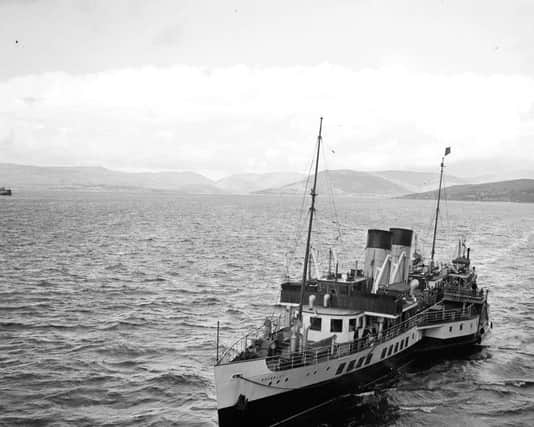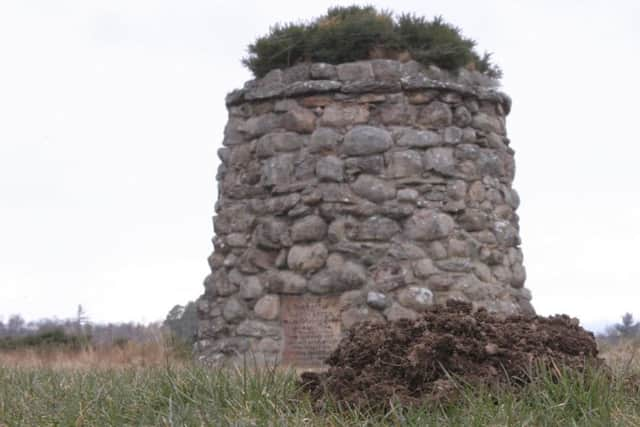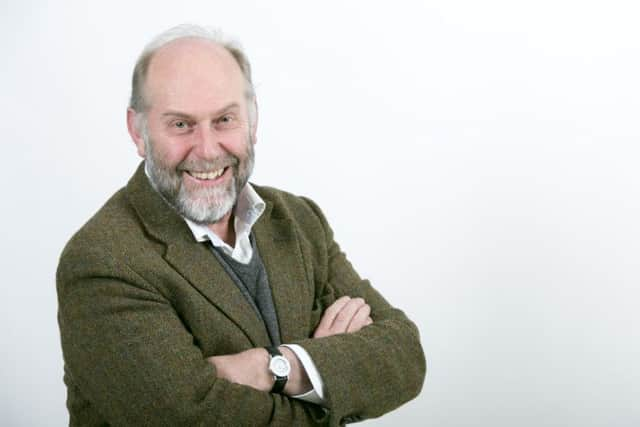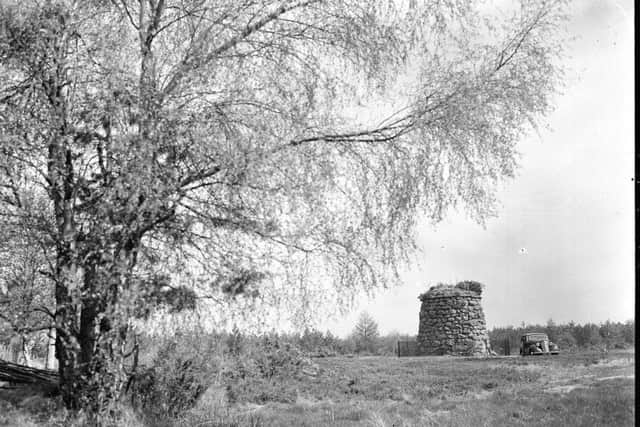Alistair Moffat: All Scots descend from immigrants


In the midst of a spasm of anxiety about immigrants, it seems a good moment to take notice of history, of our deep and recent past.
Scotland’s DNA tells us something unarguably simple – all Scots are the descendants of immigrants. There is no such thing as ‘real’ Scots or ‘indigenous’ Scots.
Advertisement
Hide AdThe ancestors of all of us arrived here after the Ice, after the glaciers had scarted out our distinctive geography, at some point between c9,000BC and now. At the farthest north-west of Europe,


Scotland has long been the destination for millions of genetic journeys, but inevitably it is the most recent series of arrivals and movements that are eye-catching.
After the slaughter at Culloden in 1746, Highland society was progressively and aggressively dismantled. The systematic killings and rapes ordered by the Duke of Cumberland and his officers had an immediate effect, but the landscapes of the Highlands began to change profoundly. Chiefs and other landowners appeared to turn against their people as the land was cleared to make way for sheep and so called country sports.
Between 1811 and 1820, the agents of a brutal aristocracy drove thousands from their homes. In a callous, cruel letter to a friend in England, Elizabeth Leveson-Gower, Duchess of Sutherland, wrote of the starving crofters: “Scotch people are of a happier constitution and do not fatten like the larger breed of animals”.
Between 1815 and 1914, more than 13 million Scots arrived in the USA, probably because it had achieved independence from Great Britain. Immigrants known as ‘Scotch Irish’ were also recognized and these were people who had taken part in the Ulster Plantations begun by James VI. Many were very successful and it has been reckoned that a staggering 23 of the USA’s presidents have had Scottish or Scotch-Irish lineages in their family tree.


Four million went to Canada and 1.5m to Australia but many of those who were evicted from their crofts or their Lowland smallholdings made much shorter journeys to the fast growing cities and their mills and factories. But in the last 250 years much of Scotland’s ancestral
Advertisement
Hide AdDNA was moving abroad to carry on its journey into the future.
The first substantial period of immigration since the Vikings began to settle in the 9th and 10th centuries was caused by the consequences of a calamity. The Irish Famine of 1845-51 drove three million to leave, and of these, 75,000 crossed the North Channel to Scotland.
Advertisement
Hide AdAt its peak, between January and April of that year, a massive 42,860 came to Scotland from Ireland. But not all disembarked on the Glasgow quays.


By 1851, 16.5 per cent of the population of rural Wigtownshire had been born in Ireland.
The first Jewish congregation gathered for worship in Edinburgh in 1816 and during the 19th century more families arrived, most of them fleeing persecution in the Russian Empire. In 1905 a fresh rash of pogroms drove 8,000 Jews to seek shelter in Scotland in one year.
By 1950, the Jewish community had grown to 80,000, but now it is in steep decline. Only 5,000 now live in and around Glasgow and the remainder, a small remnant of 6,400 mostly live in Edinburgh and Dundee.
When Tom Conti took a ScotlandsDNA test, we hoped to discover more about the precise origins of the Scottish/Italian community. By 1914 there were 4,500 Italians in Scotland, most of them working in the food industry.
Selling at first from barrows and street carts, their staples of ice cream and fish and chips became very popular. In order to avoid competing with each other, Italian families settled in towns all over Scotland. And they also added an exotic ingredient to our national genome.
Advertisement
Hide AdWhen Tom Conti’s DNA results came back, his Y chromosome, inherited from his father, Alfonso, turned out to be fascinating. It was a close match to another emigrant from Italy (and his descendants), none other than Napoleone Buonaparte.
The Emperor’s DNA had been extracted from the skin still attached to beard hairs that had been preserved in Paris, like a saintly reliquary, and it belonged to the same haplogroup as Tom’s. Casting directors take note.
Advertisement
Hide AdWar brought more Europeans to Scotland. In 1947 the Polish Resettlement Act granted citizenship to 162,000 men, most of whom had served in the free Polish forces. Marooned in Scotland by brute politics, these soldiers and their children quickly integrated and their communities have recently been reinvigorated by new arrivals from the expanding European Union and now there are thought to be
between 40,000 and 50,000 Polish-born people living and working in Scotland.
Asian communities are small, with 49,381 Pakistanis and 32,706 Indians living north of the border according to 2011 census figures.
Despite the coming of groups very visible on the high streets, the overwhelming impression of the 21st century population is not one of change. Just under 84% self-define themselves as Scots and 96 per cent as white. In reality, Scotland’s national genome has changed only very slowly over the last thousand years. We are largely who we were.
Nevertheless the revelation of one’s own origins can still surprise, and even delight.
My own Y chromosome turned out to be Scandinavian, probably brought to these shores by people known to history as the Angles. I hasten to say that does not make me an Englishman – but a Northumbrian, a kingdom that included the Tweed Valley for centuries.
Advertisement
Hide AdWhat my DNA result told me was that I descend from many generations of Borderers and that the red earth of Berwickshire is grained in my hands.
In 2003 I wrote a memoir that tried to sum up what I felt about my identity. In Ednam kirkyard, near my birthplace in Kelso, I had found the headstone of my great, great grandfather, William Moffat and two of his daughters. He had been a horseman, a ploughman at Cliftonhill Farm.
Advertisement
Hide AdThe gravestone faces east, towards the morning sun, the rigs up at Cliftonhill Farm, and stretching beyond it to the distant sea, the rich, red earth of Berwickshire where uncounted generations of my family had walked their lives. And for a fleeting moment, I heard them, my old aunts, heard the clatter of their boots come down the hill, on the metaled road by the smiddy, heard their quiet morning chatter as they shouldered their hoes and pushed open the gate to the turnips in the bottom field by the River Eden.